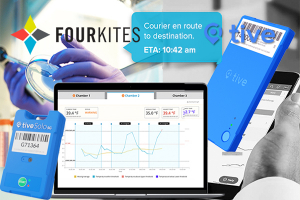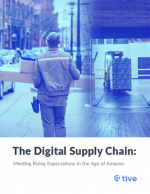Beyond Visibility: How to Build a Supply Chain That Thinks
This white paper details how end-to-end visibility will bring about a cognitive, predictive and digital supply chain, in which the flow of goods, resources, and people are mapped by an equivalent flow of information.
Using the digital supply chain to predict failures and pinpoint deliveries
Logistics managers have been waiting years for the next leap forward: end-to-end visibility.
It's here, and it will give some organizations an unfair advantage in the field of global commerce.
End-to-end visibility will bring about a cognitive, predictive and digital supply chain, in which the flow of goods, resources, and people is mapped by an equivalent flow of information.
Today’s supply chains reach across the globe, and increasingly precise and persistent location data has enabled managers to run them lean, reducing waste and unnecessary inventory.
After repeated hype cycles, end-to-end visibility has gone from simply a buzzword to an ever-elusive holy grail.
But in 2017, a handful of technological advances have finally come together to make it possible for managers to track every component from its source to its arrival in the hands of the end consumer.
More importantly, perhaps, the use cases are coming together that are making it easier for companies to see the benefit in sharing data up and down the extended supply chain.
New tracking technologies have filled gaps in supply chain visibility, while new information technology is capable of analyzing the torrent of data these tracking devices generate.
In this white paper, we’ll explain how the combination of “big data” processing and better tracking devices can be used not only to monitor supply chain activity but to identify and eliminate waste, pinpoint delivery times and predict failure points.
End-to-end visibility is making a digital supply chain possible, enabling managers to apply Lean and Six Sigma methods in concert.
The future of supply chain management is both predictive and cognitive. and the development of the digital supply chain will touch every part of the modern enterprise.
Key Take Aways:
- What are the key elements of a digital supply chain?
- What new technologies are enabling the digital supply chain?
- How can my organization use these new capabilities to take waste out of the supply chain?
- What organizational changes are required to adopt a cognitive supply chain?
What’s Related



Favorites





